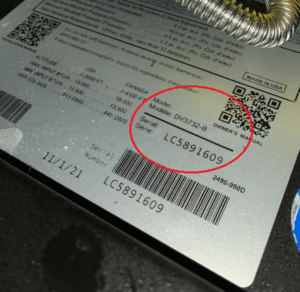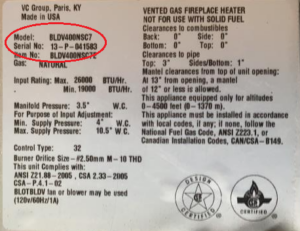Most manufacturers recommend annual service. Some even require it in order to maintain your factory warranty. Regular maintenance and safety inspections are an important part of owning a gas fireplace.
We clean the glass assembly, repaint the black metal parts inside of the fireplace if needed, check for gas leaks or carbon monoxide leaks and ensure that your fireplace is operating correctly.
We do NOT service vent-free appliances. We don’t believe that they are a safe and effective appliance to have in your home. Remember, it’s not vent-free, it’s room-vented. The exhaust has to go somewhere, and that’s inside your home.
No, we don’t work on anything other than gas fireplaces. Pellet/Wood burning fireplaces and chimney work is it’s own very specialized field. We stick with gas or propane fireplaces only.
Unfortunately no, we don’t sell or install new fireplaces. We specialize in maintenance, repairs, and upgrades for existing gas fireplaces only.
Yes, you can, but leaving it burning is perfectly safe as well. The pilot can help prevent moisture from building up inside the firebox from humidity in the air. Leaving it running can also help prolong the life of the thermocouple and thermopile.
Every fireplace is a bit different. It’s best to refer to your fireplace owner’s manual for instruction. Although, if your fireplace pilot went out unexpectedly, it may be time for maintenance.
In most cases yes, you can still use your fireplace during a power outage. If you have a Standing Pilot system (the pilot is always on) then it will work just like it usually does. If you have an Electronic Ignition system you may need to temporarily install batteries in a battery backup in order to use the fireplace. Keep in mind that your blower, if equipped, will not function during a power outage as it requires 110v power.
In many cases yes, it is. There is often a knob on the control valve inside the fireplace that has a high/low function. Some remote control systems also have the ability to change your flame height. You can reference your owner’s manual to learn more about this or we can show you during your service visit.
Many fireplaces are able to have a remote control or thermostat (or a combination remote thermostat) installed. This is something we can take care of for you when we service your fireplace.
Most fireplaces have the ability to accept a fan kit or blower assembly as long as there is an electrical outlet in the fireplace with 110v power. These can really improve the heat output and efficiency of your fireplace!
No, they are engineered along with the burner to be installed in a specific location for optimum burning efficiency. Moving them can result in damage to the fireplace and/or the logs.
Blue flames at startup are pretty typical. It can take 20-30 minutes for the fireplace to heat up and for the flames to start to yellow and reach their full potential.
Every fireplace has a rating plate or data card. On gas inserts and built-in fireplaces they are typically located inside the lower control area of the fireplace. On freestanding stoves they are often riveted to the back of the stove itself if they aren’t in the control area.
To access the rating plate or data card for your fireplace you will typically need to open the bottom louver or remove the safety screen barrier from your fireplace. They are often a metallic sticker on the bottom of the fireplace, although sometimes they are attached to a card on a metal cable or chain. On freestanding stoves they are sometimes riveted to the back of the stove itself.
Here’s some example photos of rating plates or data plates from a couple of different fireplace models. Included on them is the manufacturer, model, and serial number information that we would like to have in order to ensure that we will be ready for your service call.
If you’re unable to locate or read the rating plate don’t worry, most fireplaces have a manufacturer logo on the screen, glass, or surround.

